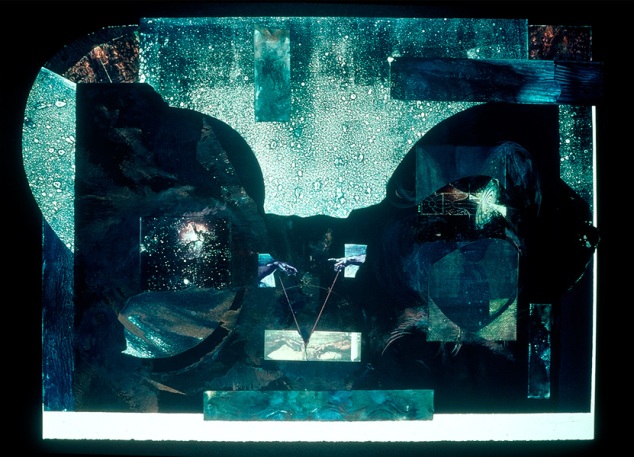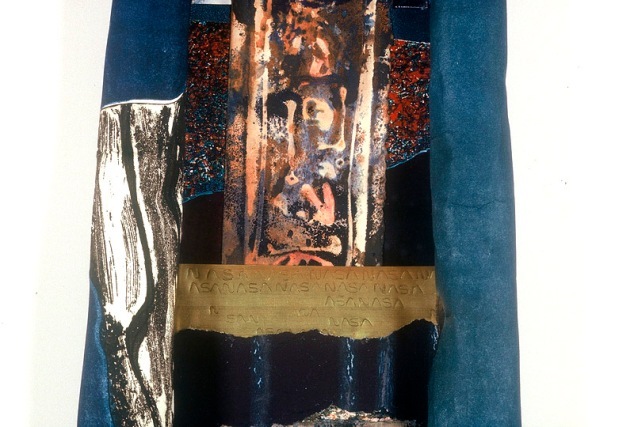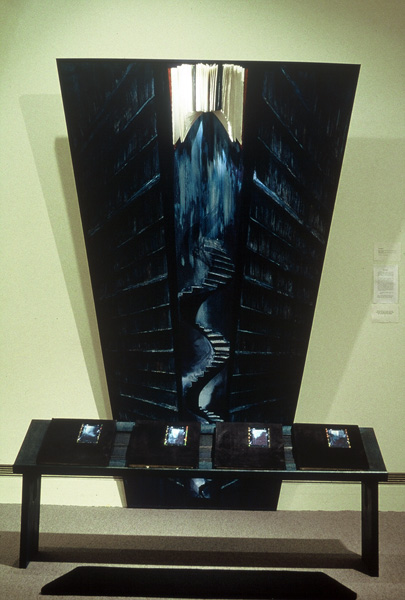What does it mean to be human? The term “homo sapien sapien” means “the one that knows that he knows.” But what do humans know? According to professional artist and lecturer Stephanie Rayner, who spoke at Trent University last week about her perspective on art and the meanings behind some of her astounding creations, there are two defining features of being human: we are aware of our mortality, and we have art. Rayner expressed to students in the first-year Knowing and Wondering course that the arts give humans a knowing beyond knowing, as they are prescient and map out human consciousness.
Drawing on observations throughout history of how humans have created art, beginning in caves where ancient people would “talk to creation” by painting on the walls and evolving throughout time with the creation of classic stories like The Wizard of Oz that depict morals about the relationship between the body, mind, and soul without children realizing it, Rayner focused the first half of the lecture on how humans have been able to connect the internal and external through artistic means that they may not even consciously grasp. The lessons and metaphors in all forms of art- from traditional paintings, music, films, stories, creation myths, and beyond- resound deeply within our subconscious. She explained that the human soul speaks through art which connects us to the universe, and that this can be both spectacular and frightening. Like how all literature derives from previous forms of literature, all forms of art can be related back to nature and the very beginning of life on Earth. The Garden of Eden is a timeless example of how art and storytelling speaks to the soul and connects us to both the physical and metaphysical, helping us to better understand our human nature.
“You are stardust; you are a child of the universe” (Rayner).
We are all attached to the world around us, and we communicate this connection in a variety of ways. In art, we strive to understand ourselves, whereas in science, we strive to refine ourselves. Science and technology are prime examples of how humans aim for perfection in attempting to enhance the quality of life, but Rayner advised how we must treat such pursuits with caution so as not to transgress the boundaries of nature and disrupt the balance of things. Currently there are scientists who are trying to defeat death altogether, however immortality could possibly lead to a “hierarchy of the undead.” The idea of living forever in paradise is enticing, but if there was no conflict, death, or problems in the world, there would be no point in living.
“We always leave Eden, because Eden is perfection, but in perfection we don’t grow; it’s the lumps and bumps that make life worthwhile” (Rayner).
Rayner does not oppose science, but rather aims to show through her artwork how science and technology have forced humankind into a new consciousness and are making us re-examine what it means to be human. Scientific developments have done miraculous things, such as lengthening the average human lifespan and making medical treatments more readily available to greater numbers of people. That being said, there is a line that must be drawn before we can no longer contain what we create. Thus, Rayner emphasizes the need for balance and taking responsibility for the creations we have let loose into the world; as Victor Frankenstein warns the explorer Robert Walton when telling him the tale of the Monster he created,
“Learn from me…how dangerous is the acquirement of knowledge and how much happier that man is who believes his native town to be the world, than he who aspires to become greater than his nature will allow” (Shelley 54).
Rayner focused the second half of the lecture on some of her own artworks which respond to the struggle between spirituality and science in utterly profound ways. As her website contains the most accurate descriptions of what each piece represents, below are images of the pieces she shared with links to her website.

“Galileo’s Eyelid.” Retrieved from http://www.stephanierayner.com/home.html

“Angel Dancing on the Head of a Pin.” Retrieved from http://www.stephanierayner.com/home.html

“The Solar Boat.” Retrieved from http://www.stephanierayner.com/home.html

“The Library.” Retrieved from http://www.stephanierayner.com/home.html
Art and science are ways of knowing that humans strive to master through different ways of looking and interacting with the world, and both pursuits have different impacts on our interpretations of “the big questions.” Ultimately, however, humans cannot know everything despite which path they take, as human reason is inherently flawed, though this is arguably for the best. If humans were able to conquer death and discover everything there is to know about the universe, the consequences may be dire, as having such power may lead us to unleashing horrors into the world that could not be controlled. Therefore, Rayner ended the lecture by asking each student a question related to her piece called “The Library” which made them think about what kind of knowledge they value the most and whether or not being omniscient would be a good thing:
“If you could look at the Book of Life, would you? If yes, what would you look for?”
Everyone has different perspectives on the meaning of life, what their purpose is here on Earth, and whether or not there is life after death. Everyone is naturally curious, and everyone longs to understand themselves in relation to the natural world around them. Many of the students answered that they would not look at the book and would rather live in blissful ignorance of their fates, though some confessed their curiousity would likely get the better of them and that they would not be able to restrain themselves from peeking at the pages. Knowledge is power, and the way that power is used may either help or hinder humanity depending on who is allowed to wield it. Progress is always being made, but it is up to us to determine whether this progress will push us forward or lead us to self-destruction. According to Rayner, through pursuing morally-responsible knowledge and understanding the relationship between art, science, and spirituality, we can do great things. As members of a common humanity, we have a responsibility to make sure our power does not go unchecked, for if we have the power to create, we also have the power to destroy.
“We are the children of Earth; we have got to work together” (Rayner).
